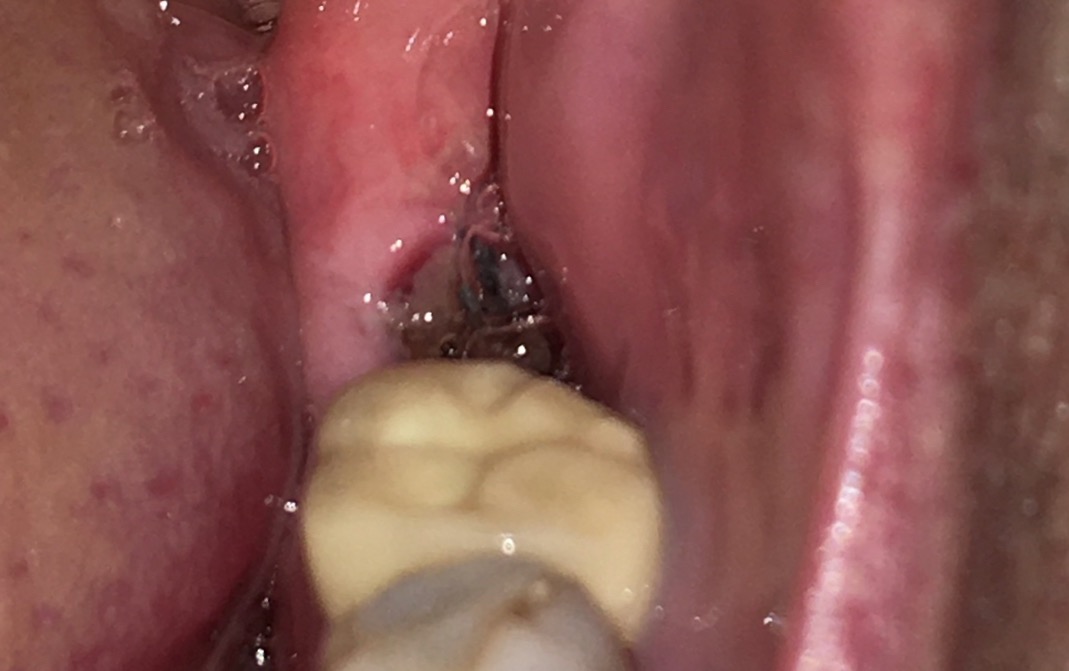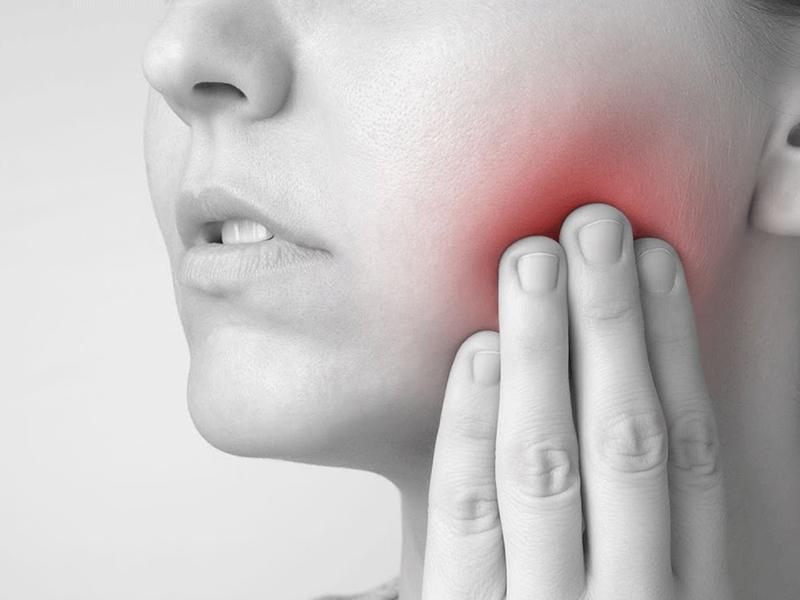Dry Socket
vs Normal Pain
What' the difference between a dry socket vs normal pain? OR do you just have a teeth socket infection?
It can be hard to tell the difference, and you might be wondering if it even matters, when you are in pain after a tooth extraction.
BUT IT DOES MATTER because the treatment is different. If you do the wrong thing, you will not fix the problem, and your pain will gradually get worse. SO we need to work out if you have dry socket pain, an infected socket, or just normal pain .
ONCE we know which condition you have, we can recommend the best treatment! I know about this stuff, both as a dentist AND as a patient - I had a tooth removed by an oral surgeon in March 2020 - and afterwards it was sore!
But I was able to help myself by using the rules I am laying out here for you. A dry socket is technically called alveolar osteitis. The first word refers to the type bone of the jaws, and the second word refers to an inflammation of the bone. A dry socket is a painful condition.
 The hole in my gum where the tooth used to be.
The hole in my gum where the tooth used to be.So let’s get down to business - what is the difference between dry socket vs normal pain?
First, with a dry socket you will probably have a bad taste or a bad smell in your mouth. Next, you will start to get pain in the extraction socket 4 to 5 days AFTER the extraction.You will NOT have any swelling in the area at all.
Dry Socket vs Normal Pain
You would probably think that you have an infection in the socket, because it’s taken a few days for it to get painful, and you have a bad taste in your mouth and bad breath.
BUT you’d be WRONG!
THIS IS THE MAIN SIGN that you have a DRY SOCKET, and NOT an infection. The pain starts 4 to 5 days AFTER the tooth removal. The pain is not caused by bacteria in the socket, and so there is minimal swelling, if any.
And antibiotics will not help. If there is no infection, then antibiotics have nothing to work on - they are ONLY effective against bacteria. They are NOT painkillers!
So what can you do about dry socket pain?
The pain IS caused by the tooth extraction socket being EMPTY, without any blood clot or healing in there. The bone inside the socket is exposed. You have an empty tooth socket.
IT IS THE EXPOSED BONE THAT CAUSES THE PAIN.

Right after the tooth was extracted, the socket will have filled up with blood, then a blood clot forms. We want this blood clot to become firm in the socket, to fill it up.
Gradually it becomes firmer, and new blood capillaries start to grow into the blood clot, and the healing process starts. Slowly, bit by bit, new gum tissue and then bone will grow into the socket, until it is filled up and fully healed.
This process takes from 3 to 6 months to fully complete, approximately.
BUT IF THE BLOOD CLOT GETS WASHED OUT OF THE SOCKET before it has a chance to stabilize, then you are left with an empty socket. WITH EXPOSED BONE. You have a “dry” socket.
And the exposed bone hurts!
When you get a dry socket, the blood clot normally gets washed out of the socket within 2 to 4 days after the tooth removal. That is why the pain starts up around that time.
BUT why do have a bad taste or smell in your mouth? Surely that’s infection? NO, not necessarily. The bad taste you have when you get a dry socket is due to food particles getting stuck down in the bottom of the socket, and rotting.
Dry Socket vs Normal Pain
WHAT’S THE TREATMENT? It depends on the severity of your pain.
There are 3 options!
- If you only have slight discomfort and a bit of a bad taste, you probably only need to do some vigorous mouth washing with HOT salt water.
Just half a teaspoon of normal table salt in a cup of hot water. Just rinse it forcefully around the extraction socket, to help clean it out. Do this every 4 hours. You can take a standard pain reliever like ibuprofen 600mg.
- If you have MODERATE PAIN and quite noticeable bad taste or unpleasant smell, then you probably have a fair bit of food debris down in the socket. You need to flush the socket out to get rid of the debris, and ideally increase oxygen levels to kick-start healing.
The BEST way to do this is to get hold of an oxygenating mouthwash like TheraBreath, and put it into the water tank of a good-quality oral irrigator, such as the WaterPik Oral Irrigator.
Then use the fine jet stream that comes out of the irrigator to wash out the socket! As well as washing out that decaying food debris, you are raising the oxygen level in the socket with the TheraBreath mouthwash. Again, do this 4 times a day at first, and take a combination of ibuprofen 600mg WITH 1000mg paracetamol (2 extra-strength Tylenol) for the pain until it starts to settle down.
- BUT if you have SEVERE pain from your dry socket, you need more aggressive treatment. You have to re-establish the blood clot in the socket. You have to go back to your dentist, and he will numb up the area (see How To Get A Painless Shot), then wash out the socket thoroughly, and scrape the bone inside the socket to remove any dead bone that might have formed, and make the bone bleed.
Then the dry socket will be clean, and will fill up with a blood clot. Your dentist might also put a medicated dressing into the socket, and a suture (a stitch) across the socket while it’s numb, to help stabilize the blood clot and help it heal up normally.
He may also prescribe you some stronger pain medications to take for the 1 or 2 days it will take for the socket to start healing and for the intense pain to subside.
Those are the three options open to you to treat dry socket pain.
BUT HERE’S SOMETHING INTERESTING.
If you can get through the painful period of 7 to 10 days, nearly ALL dry sockets will heal up eventually, WITHOUT any treatment! But it takes time. Maybe up to 14 days in total.
Dry Socket vs Normal Pain
Normal pain after tooth extraction usually starts right away, when the numbness wears off. You feel a dull ache which gets worse as the anesthetic effect reduces over time.
You can normally control this with 600mg ibuprofen. Over the first 24 hours the pain stays about the same, and starts to get less as you get to day 3 and 4, unlike dry socket pain which STARTS at day 3 or 4.
How can you prevent a dry socket?
There are several things you can do to reduce your chances of getting a dry socket after tooth removal. But there are some risk factors that you cannot do anything about. The biggest one is that a lower molar tooth has a higher risk of getting a dry socket compared to an upper tooth.
The reason is that the underlying bone in the lower jaw around a molar tooth is much more dense than in the upper jaw, and the blood supply is not as good. So if you are getting a lower tooth removed, you already have a higher risk.
But what things CAN you do?
- Smoking. You should try to reduce or even cut out smoking for a few weeks before the wisdom tooth removal. The more you cut down, and for longer, the better. The reason is that tobacco products in your blood stream reduce the capillary blood flow in the gums. This means less blood (and immune system cells) getting to the extraction socket.
- Do everything you can to protect the blood clot in the socket afterwards. This means definitely NO mouth washing nor rinsing for at least 48 hours afterwards. Just resist the temptation to have a swish around with some water or a mouthwash. This is very important. The blood clot that builds up is very delicate, and easily washed out inside the first 48 hours of tooth removal.
- Eat only very soft foods without small seeds or pips. I have a dedicated page on the foods you can eat after a tooth extraction.
So, if your dry socket pain is not too bad, you will probably get away with using an oxygenating mouthwash and an oral irrigator, to wash out any food debris that’s trapped in there, and kick-start healing with the oxygen released by the mouthwash.
Remember, if you are concerned about any dental issue, and want my personal profession opinion, you can contact me at JustAnswer here.
Updated January, 2023



